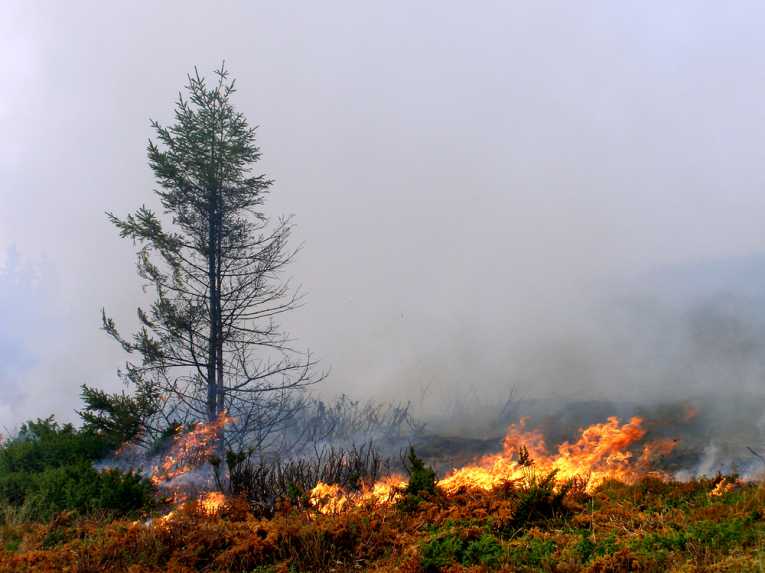Large parts of the Earth could be at risk of increased fire because of climate change, say scientists.
Some areas, including much of Europe and America, may have to cope with more wildfires by the turn of the century, say experts from UC Berkeley, California and Texas Tech University.
Increasing temperatures in these areas could bring more frequent fires, but in tropical rainforests around the Equator, more rainfall could lessen fire risk.
The main author and fire expert, Max Moritz, of UC Cooperative Extension, says, "In the long run, we found what most fear - increasing fire activity across large parts of the planet. But the speed and extent to which some of these changes may happen is surprising."
The changes will not only disrupt people's lives, but will endanger plants and animals that are trying to come to terms with loss of habitat.
The team's findings are published in the Ecological Society of America's peer-reviewed journal Ecosphere.
The researchers examined 16 climate change models to create comprehensive projections of the possible alterations in fire patterns caused by climate change.
The results demonstrate that it is vital to ensure planners and emergency bodies consider fire hazards, says Mr Moritz.
The Berkeley team worked alongside a Texas Tech University atmospheric scientist to examine more than 10 years of satellite-based fire records and climate observations to produce the modelling results.
They pinpointed gradients in between areas at risk from fire and those not at risk and then quantified the environmental factors involved. From there, they simulated how climate change would affect fire activity until the end of the century, as projected by various global climate models.
Many earlier studies looked at specific areas or just took into account a few climate models, says Katharine Hayhoe, who is associate professor and director of Texas Tech University's Climate Science Center.
The new study factored in 16 different climate models and data from satellites to provide a global perspective.
The climate figures taken into account include mean yearly precipitation and mean temperature of the warmest month that often control the long-term production of biomass and fuel flammability.
Other factors that cause more short-term changes in climate, including alterations in yearly rainfall because of the effect of El Niño were not featured.
The biggest difference in the modelling is over the first few decades, where it is not entirely clear if fire activity will rise or fall over half the Earth. But in areas including Western USA, there is a higher degree of agreement that fire patterns will change in both the short and long term.
The study does point to the fact that the changes society makes today and over the next few decades will affect the climate in future, says Katherine Hayhoe.
David Ganz, another co-author of the report and director of forest carbon science at The Nature Conservancy at the time, points out that the results are important for those who rely upon ecosystems that are fire-sensitive, such as the millions in Southeast Asia that rely on forested ecosystems for their jobs.
The Nature Conservancy, The Natural Sciences and Engineering Research Council of Canada, the U.S. Forest Service and the National Science Foundation backed the research.










